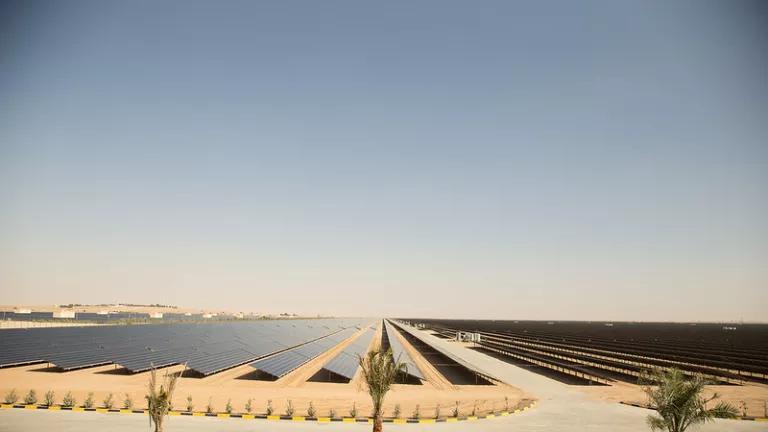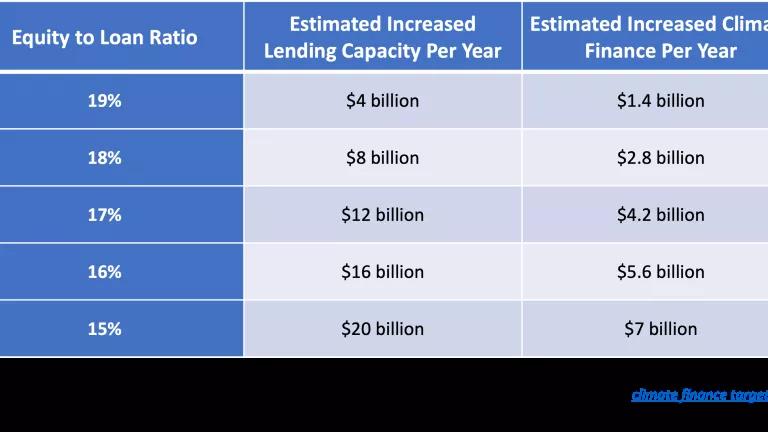Carbon Offsets 101
Learn more about carbon offsets and how they can provide a valuable way to reduce your climate footprint and increase your contribution to the climate solution.

The looming climate crisis means that we need to take collective and personal actions to significantly reduce the emissions of planet-warming greenhouse gases. While much of the change must come through government-level actions, individuals also can take such steps as purchasing an electric car, taking public transit, using energy efficient lightbulbs and appliances, and eating less meat. But what can we do about the emissions from activities like airline travel where climate-friendly alternatives are not yet widely available? The answer may be carbon offsets.
Carbon offsets can provide a valuable way to further reduce your climate footprint and increase your personal contribution to the climate solution. But what are carbon offsets and what should you know before taking the plunge? Read on for answers to these and other questions.
When and why might I consider using carbon offsets?
One of the key ways offsets are being used today is to offset the emissions from flying. A long-distance flight using traditional jet fuel results in a lot of carbon pollution, which has an outsized effect on warming when emitted at cruising altitude. For those who choose to fly, high-quality carbon offsets provide a way to compensate in part for the harm to the climate. You can use a carbon calculator (more info below) to estimate the emissions from the flight and then purchase an equivalent amount of offsets from one of many credible offset providers. The cost of the offsets is typically a small increment to the cost of the flight, adding, for example, around $10 to $20 to the price of a coach seat from Los Angeles to New York. The amount of emissions from a flight varies, based on the distance traveled, the number of legs (multiple short flights result in more emissions that a single long one), and the section of cabin where you sit (first class and business seats are responsible for more of the emissions from a plane flight than coach seats, because they take up more room).
If there are other activities that produce significant emissions that you cannot fully avoid, such as driving a gasoline-powered car, you also can purchase offsets for those activities. Simply use the calculator to estimate the emissions from the activity you’re concerned about and buy the appropriate quantity of offsets.
What exactly are carbon offsets and how do they help reduce my impact on the climate?
Carbon offsets are credits purchased from projects that are designed to reduce emissions of planet-warming greenhouse gases. Offset projects do this by implementing actions to increase the sequestration of climate-warming carbon dioxide into long-lived reservoirs of carbon like trees, soils, and wetlands or by reducing emissions of greenhouse gases from such sources as landfills, farms, and coal mines.
Carbon offsets typically cost from $10 to $20 per tonne of CO2 equivalent. Very low cost projects may not have adequate safeguards or not provide incremental emission reductions. Higher cost projects are possible, but are less likely to be implemented because of the difficulty in selling the higher cost credits. And the cost of carbon offsets that can be used for compliance with a regulatory program will be linked to the cost of emissions allowances or alternative means of compliance.
Each carbon offset credit is associated with the emission reduction from a specific project. For example, in a forest management project, a landowner chooses to manage the land so as to increase the carbon that is sequestered relative to a projection of what would have occurred in the absence of the project, and then sell the offsets associated with the project. The money the landowner makes from selling the offsets is used to pay for the cost of implementing the project and maintaining it over time, providing a financial incentive to maintain the forest as opposed to cutting it down. Unless you’re buying offsets on behalf of a large corporation, you will typically purchase the offsets from an intermediary like Terrapass, Native Energy, Green E, or Cool Effect, which facilitate the purchase of small quantities of offsets and provide calculators to estimate the amount you need.

Woody debris on the forest floor of a structural complexity enhancement plot inside the Jericho Research Forest.
Do carbon offsets really reduce emissions?
Some people contend that offsets don’t produce real emission reductions. They point to projects that are flawed for one reason or another, like the refrigerant plants in China that made lots of money manufacturing chemicals used to cool appliances like refrigerators and air conditioners just so they could get carbon credits for destroying the harmful chemicals.
What occurred at those Chinese plants points to one of the key issues with offsets. Offsets in the voluntary market are largely unregulated and can come from a wide range of sources. In that way, offsets are like seafood. It is critically important to be sure you are getting a high quality product. You shouldn’t eat raw oysters plucked from the boat dock after they have been sitting out in the sun all day. But when carefully handled and well prepared, seafood can be a nutritious and tasty part of your diet. Similarly, it’s important to choose offsets that are carefully designed and diligently implemented and measured.
Rigorous offset programs, like the compliance offset program established under legislative direction and administered by the California Air Resources Board, for example, include strict limitations on the types of eligible projects, third-party verification of compliance, a reserve to ensure against involuntary reversals (explained below), and a requirement that at least half of all the offset credits must provide direct environmental benefits in the state.
Why is it important to find the right offset program and what should I look for?
In order to provide a benefit to the climate, a carbon offset project has to actually reduce emissions to the atmosphere beyond what would occur without the project. This is known as “additionality.” Key criteria to look for in evaluating carbon offset programs are:
- A clearly defined standardized set of requirements—typically called a “protocol”—that determine which types of projects are eligible and how emission reductions are to be measured;
- Verification of compliance with these requirements by an independent third party;
- Registration of the offsets in an offset registry, which tracks each credit with a unique serial number to ensure it can only be used once; (full disclosure: I serve on the board of the Climate Action Reserve, one of the largest offset registries in the U.S.) and
- Full transparency on project implementation and reporting.
Offset projects that rely on the sequestration of carbon in plant biomass (e.g. wood) are subject to the potential release of that carbon back into the atmosphere if there is a fire, insect infestation, or drought that results in the premature death and decomposition of the trees. For these types of projects there should be a reserve or “buffer pool” of credits available to compensate for this type of involuntary reversal and keep the system whole. This reserve is held by the offset registry and drawn on as a kind of insurance to the consumer that their offset represents a permanent reduction.
Depending on the project type, offsets can also provide important co-benefits like protection of endangered ecosystems, green jobs, and improvements to local air quality and public health. In purchasing offset credits, you may choose to support projects that help address other environmental and social values that are important to you. Purchasing offsets from projects in your local community is an effective way to help protect the climate while supporting green jobs and a healthy environment close to home.
How can I find impactful carbon offsets to purchase?
Consumers and companies that want to offset emissions should look to leading offset purveyors to get an accurate accounting of their greenhouse gas emissions. By comparison shopping, purchasers can identify reliable offset credits from projects that help to mitigate the impact on the climate. A good place to start your search are some recent articles—here and here—that provide further info on offset providers and options.
An overview of how NRDC addresses emissions from our operations can be found at: https://www.nrdc.org/experts/maria-mccain/nrdcs-approach-reduction-first-carbon-offsets-second



